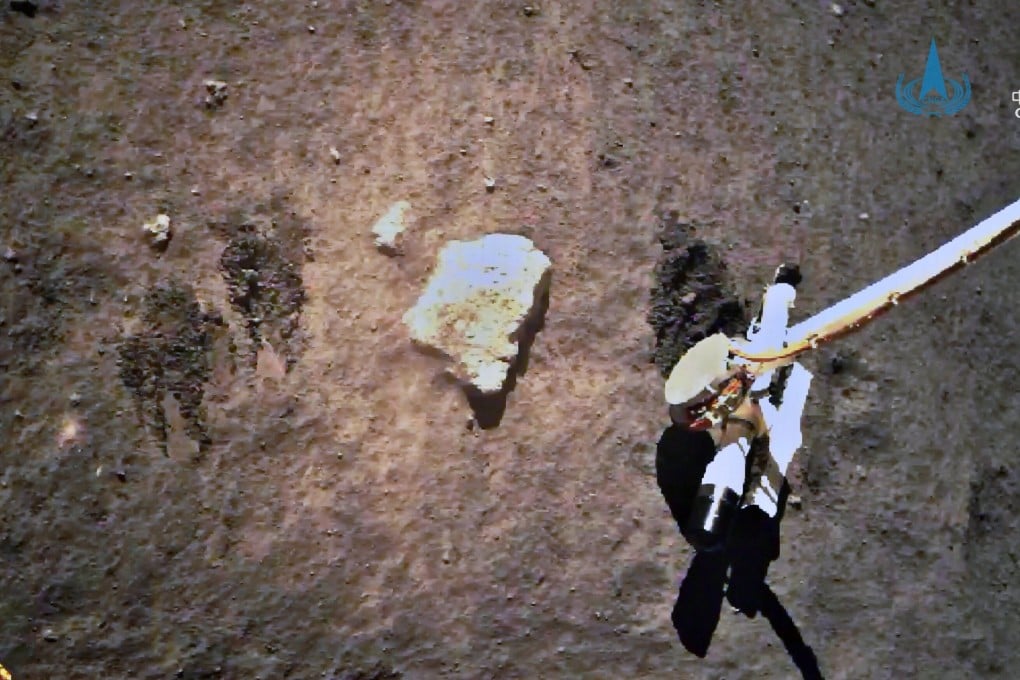China’s Chang’e 5 lunar probe finds first on-site evidence of water on moon’s surface
- The presence of water had been confirmed by remote observation but the lander has now detected signs of water in rocks and soil
- The probe has already sent back lunar rocks for analysis and scientists say the latest data is like carrying out a ‘field trip’ on the moon

The moon had long been thought to be totally dry, but scientists have confirmed the presence of water on its surface just over a decade ago.
Until now their findings had been based on orbital observations but the latest study, published in Science Advances on Friday, said the lander had detected signs of water molecules (H2O) or a close chemical relative hydroxyl (OH).
“It’s like a ‘field trip’ out on the Moon, the first opportunity to detect signs of water at close range and high resolution on the lunar surface,” Lin Honglei, lead author of the study from the Institute of Geology and Geophysics at the Chinese Academy of Sciences, told China Science Daily.
Most of the water in the lunar soil is thought to be the result of “solar wind” that drove hydrogen atoms onto the surface of the moon, where they reacted with oxygen in the surface minerals to form water and hydroxyl.